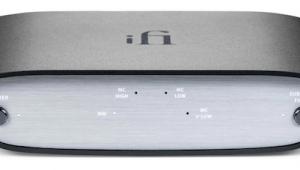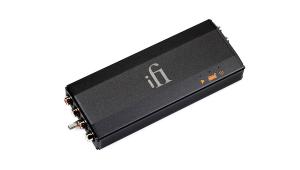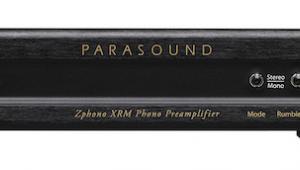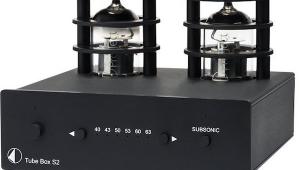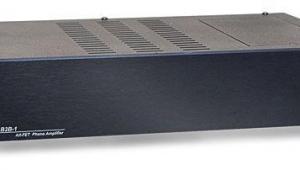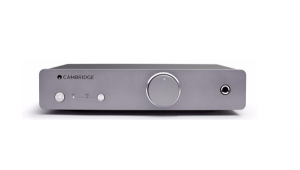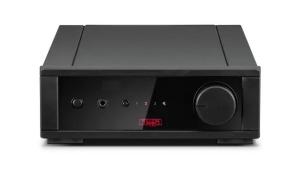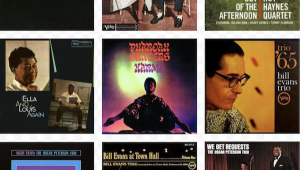The Even More Amazing ifi Micro iPhono 2 MM/MC Phono Preamplifier
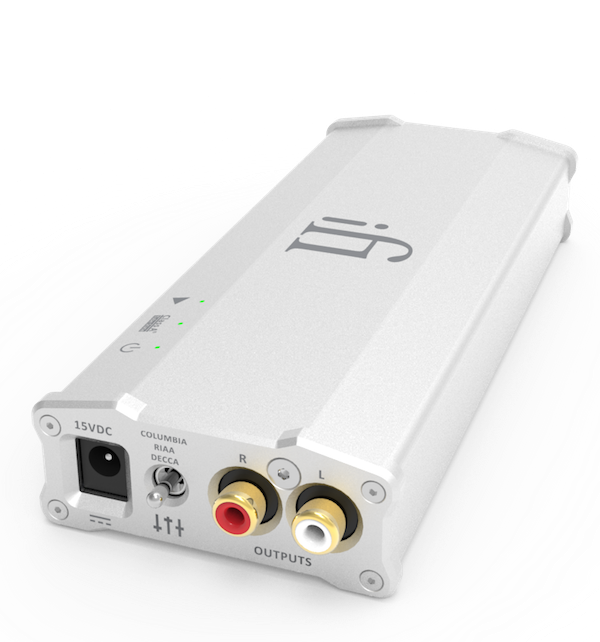
The price has risen $100 but comparing the older and newer iPhono demonstrates an improvement well beyond one quarter better.
But first, what’s changed: for starters gain can now be set up to 72dB for ultra-low output moving coil cartridges—or as low as 36dB for MM.
Dynamic range has been upped from 90dB to an ear-opening 106dB—that’s an increase of 15dB! The newly designed RIAA circuit is spec’d at ±0.2dB accuracy from 20Hz-20kHz.
The unit uses a further refined Class A TubeState™ circuit utilizing a new Burr-Brown Soundplus® J-FET amp as part of the J-FET/BJT output buffer. The circuit reduces the load seen by the main amplification circuit, which is said to improve linearity. Power supply flitering has been increased by a factor of five. Noise levels are said to approach the theoretical room temperature limits. The spec’d signal to noise ratio is claimed to be 3dB better on MC and 10dB quieter on MM.
The original iPhono had a pair of coupling capacitors to rid DC from the output and no DC servo. The new iPhono 2 incorporates an all-new Direct-Drive Servo-less ‘DC Infinity’ circuit, that has no capacitor and no DC-Servo, so it adds into the audio path zero noise and no distortion.
Parts quality has also been upped, including the use of more Japanese TDK C0G capacitors and ultra-low distortion (<0.00001%@1V/10kHz) Panasonic ECPU film capacitors specifically designed for use in audio circuits and compared to the original iPhono many more Vishay MELF type thin film resistors. There’s also a new 15V power supply versus the original’s 9V one.
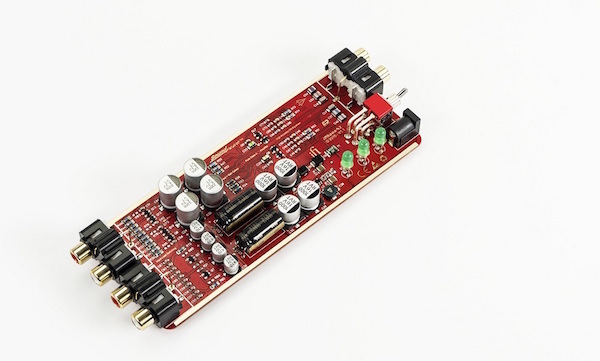
Identical Feature Set
The iPhono 2’s feature set duplicates the original’s. There are separate MM and MC inputs on one side and a single set of RCA output jacks on the other. On bottom are three sets of dipswitches: one sets capacitive MM loading and selects MM or MC, a second selects MC resistive loading (33 ohms, 330 ohms, 1k ohm), while the third gives you EQ options plus the extra gain if needed. As in the original iPhono, your equalization choices are RIAA, eRIAA, IEC, and DECCA and Columbia.
Please read what I wrote in the original review about these options and add to it this: I was fortunate enough to speak with one of the last surviving original UK Decca mastering engineers George Bettyes. Mr. Bettyes insisted that Decca implemented the RIAA curve as soon as the company began issuing stereo records. He also insisted that UK Decca and American London records were identical other than the labels used. That is why, he insisted, all older American stereo London records say on them “use the RIAA curve”. So when you read in the instructions here about using the Columbia curve on ‘70s era stereo records, do yourself a favor and ignore them! Ditto what’s suggested about Decca records and the Decca FFRR curve!!!!!!!!
If these records sound “better” with those curves, you are using them as a tone control and not for strictly accurate playback.
Yes, But How Does it Sound?
The iPhono 2’s default settings are 60dB of gain, RIAA EQ eRIAA (enhanced with Neumann time constant (see original iPhono review), and 1k ohm resistive loading.
While the iPhono 2 sounds very good out of the box, to fully appreciate its sonic flower it must be given a chance to warm up and break in. At first I thought it sounded very much like the original but with clearly better bass. After an extended break in time, the differences between the original and the new iPhono became major and even profound.
I mostly ran it using the VPI Prime turntable fitted with a Lyra Helikon SL cartridge, which outputs a very low .22mV and has an internal impedance of 3 ohms. It’s very detailed and “fast” overall, but less than lush sounding in the midrange. I had certain expectations of what I’d hear.
(I did find that though a 3 ohm internal impedance normally calls for loading of 100 ohms or less, the iPhono 2 sounded best at the default 1kHz setting).
First of all the iPhono 2’s bottom end is far more fully extended and fleshed out than was the original, of which I wrote: “The iPhono didn't plumb the depths but how many are going to use it with speakers capable of below 30Hz response? The bass that was there, however, was very clean, precise and well-controlled.”
On the new double LP set of dub style Jamaican music with some breezy Brazilian thrown in for variety Sunshine Seas by New Zion w. Cyro (RareNoise RNR065LP), the iPhono 2 proved that it does “plumb the depths” that the original iPhono doesn’t manage. Bass was deeper, tighter, more forceful, and yet as clean, precise and controlled as before. A major upgrade.
I described the original as lacking in midrange bloom, with attack that was “… clean and fast, the sustain was somewhat lacking and decay was pretty stingy.” That was the case here too upon first turn-on, but over time as the unit broke in, bloom improved as did the generosity of the sustain and decay. The midrange became “bloomin’” liquid, in fact.
I also complained (only a bit, given the $399 price) about the original’s lack of stage depth, but with the improved bloom, sustain and decay, stage depth greatly improved. It was easy to switch back and forth between the two iPhonos. The improvements rendered by the new iPhono 2 were easy to hear—especially the bass depth and solidity on the dub music.
So take what’s said in the original review and remove the negatives and that’s what you get for $499: an even more impressive and versatile phono preamplifier that produced a level of liquidity, bloom and textures the original missed, along with superior bass and more precise transients along with blacker backgrounds and easily heard improved transparency.
A really good and versatile phono preamplifier has given way to one that’s ridiculously good. The price has gone up $100 but the new iPhono 2 is easily more than twice as good as the original. A major achievement in budget priced phono gear. If you have an original iPhono should you sell and upgrade to the iPhono 2? Definitely, unless you’re looking to seriously upgrade, in which case you’ll be spending well more than $499 and even then, if you’re not careful you may spend much more and not get something better than the iPhone 2! Highly recommended! (for complete specs and details visit the ifi Audio website.





